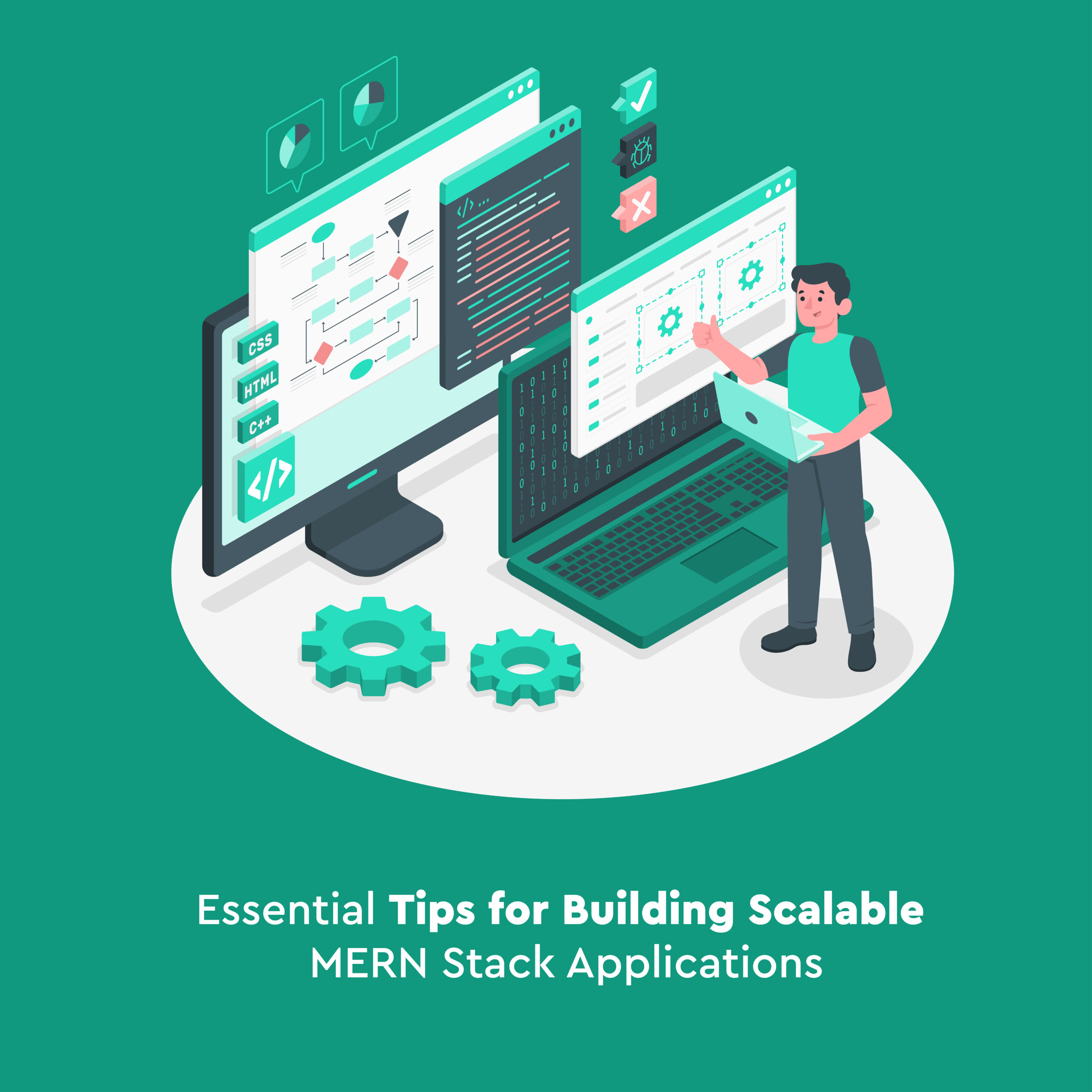The MERN stack – a combination of Express.js, React, Node.js, and MongoDB – is growing in popularity among developers looking to create dependable and dynamic online apps. However, maintaining scalability becomes a crucial concern due to increase in system complexity and user population. A scalable application should withstand growing loads and sustain functionality without compromising user experience.
Thus, scalable MERN stack applications require a methodical approach to development and in-depth knowledge of every element in the MERN stack. In this article, you will discover several tips to make your MERN stack apps scalable and make them effective, responsive, and growth-ready.
Executive Summary
Optimize Code and Data Structures
Enhance Database Performance
Improve Server-Side Efficiency
Client-side Optimizations
Implement Regular Performance Audits
Utilize Content Delivery Networks (CDNs)
Prepare for Scalability with Microservices
Focus on Security while Scaling
Ensure Mobile Optimization
Automate with Continuous Integration and Continuous Deployment (CI/CD) Pipelines
Preparing Your MERN Stack Apps for 2025: Proven Techniques for Future Scalability
- Optimize Code and Data Structures
Writing clean, efficient code is foundational to MERN Stack development. Organize algorithms and data structures to handle large amounts of data and high user traffic when the application is becoming popular. It’s ideal not to rely heavily on third-party code. Moreover, perform code reviews to determine possible performance issues regularly. - Enhance Database Performance
MongoDB is a NoSQL database. This enables developers to better manage unstructured data. However, additional tuning of queries and indexes is required to handle unstructured data efficiently. Index the excessive fields, enhance query operations, and maintain proper data modeling to avoid overloading the databases and ensure fast responses. Further, use cache mechanisms to prevent the direct database call. - Improve Server-Side Efficiency
In Express.js, optimize routing and middleware usage to streamline MERN Stack backend development. For example, use load balancing to enhance how applications handle the requests to allow it to float even under a very high load. Node.js now features non-blocking and event driven architecture and this improves the concurrency and, in turn, performance of apps by supporting multiple connections simultaneously. - Client-side Optimizations
React, as the front-end library in the MERN stack, has several approaches to improve performance. Incorporate code splitting into your codebase such that what is needed will be loaded at the appropriate time and not all at once. Use lazy loading only for essential components and apply caching strategies to enhance the rate on the subsequent visits. These practices reduce the overall load on the server and improve user experience, making MERN stack frontend development more effective. - Implement Regular Performance Audits
Perform periodical performance audits to resolve issues that may slow down scalability. Tools like Google Lighthouse offer suggestions regarding such technical aspects of app’s functioning as, for example, minimizing the JS as load or enhancing rendering performance. This is the key aspect of optimizing MERN stack performance. - Utilize Content Delivery Networks (CDNs)
CDNs leverage the distribution of static assets, such as images and scripts, across global servers, so that users will not experience a relatively slower connection when they are in a different time zone. This distribution is beneficial for applications with a wide user base, ensuring that all users experience fast load times. - Prepare for Scalability with Microservices
Break down your application into smaller, independent microservices that can be scaled individually. This approach not only enhances scalability but also allows for better resource management and easier maintenance. Each microservice is deployed and scaled independently based on demand to optimize resource usage and improve application resilience. - Focus on Security while Scaling
More the application grows crowded, the more important it becomes to keep the security strong. Encode and validate all input, update software dependencies, and encrypt all data sent over the internet. Further, always perform security checks from time to time to discover loopholes that occur when your app is in the process of development. Using MERN stack authentication is a best practice to guarantee that user data stays secure. - Ensure Mobile Optimization
Many use web applications through mobile devices. Therefore, making MERN stack applications mobile-compatible is critical. Optimize apps for multiple screen sizes to be used effectively across devices and platforms. - Automate with CI/CD Pipelines
Pipelines for continuous integration and continuous deployment (CI/CD) automate the testing and deployment of code updates to ensure that applications stays current and stable. CI/CD procedures speed up iterations and scaling while reducing issues while releasing software into production.
Conclusion
Using the MERN stack to build scalable applications necessitates a comprehensive strategy for reliable server-side management, database optimisation, and more. Developers create applications that not only fulfill current expectations but also future-proof products by putting performance, security, and scalability first.
At Techmindz, we offer developers a comprehensive MERN stack tutorial including MERN Stack for Beginners. It allows you to become proficient in fundamental coding techniques to create high-performing, scalable apps using MERN stack, RPA, Java, Python, and more. Regardless of your level of experience, our extensive training programs further ensure your success in the cutthroat IT industry of today.














0 Comments